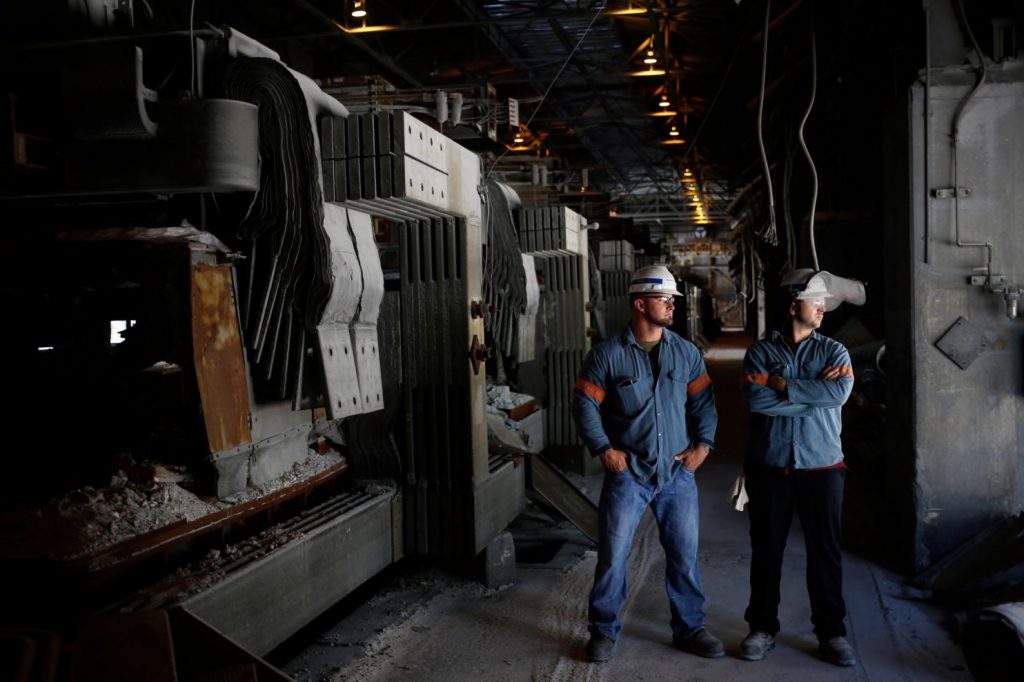By Jeff Ferry, CPA Research Director
On Dec. 6th, the Tax Foundation published a brief document claiming that the tariffs implemented by the Trump administration earlier this year impose a $42 billion cost on Americans. The claim is wrong and based on misleading analysis, as a quick look at the facts and economic analysis of tariffs reveals.
In reality, tariffs are almost never paid entirely by either producers or consumers of the tariffed good. What typically happens is that producers (exporters) of the tariffed good cut their export prices in order to remain competitive in the importer’s market. So the impact or incidence of the tax is split between producers and consumers. Each good has its own supply and demand curves and competitive position in the US market, and these factors determine how much of the tariff is absorbed by the producer and how much paid by the consumer. In the case of the $250 billion worth of Chinese imports that have been tariffed, these goods were targeted because alternatives to Chinese suppliers were identified. The existence of competition puts added pressure on Chinese suppliers to remain competitive by cutting prices. Further, the US market is the largest consumer market in the world and the largest market for many Chinese exporters. Chinese exporters therefore have an added incentive to cut prices in order to maintain sales in America.
The fact that the 10% tariffs on Chinese goods have not led to price increases of 10% in the prices of these goods is easily observable simply by looking at the detailed breakdowns of consumer prices and producer prices available on the government’s BLS website for 2018 through October. Overall inflation is stable at around 2%. There are very few goods showing annual price increases approaching 10%. In fact the only major category of consumer goods showing double-digit price increases is energy (including gasoline). Energy price increases have nothing to do with tariffs on Chinese imports. The published price data shows on its face that the Tax Foundation’s so-called analysis is wrong. The Tax Foundation does not acknowledge this problem in their analysis. No observed data is quoted in their study.
The pressures on China to cut its export prices to remain competitive in the US market were summarized by another study published last month, entitled Who is Paying for the Trade War in China? authored by two European economists, Benedikt Zoller-Rydzek and Gabriel Felbermayr. That study concluded that Chinese exporters are paying 75% of the cost of the Section 301 China tariffs. The study was based on a detailed analysis of the goods actually liable for the tariffs, which were divided into 702 categories. The study used actual estimates of the elasticity of demand from other academic studies. The Tax Foundation study by contrast is based on economic theory combined with generalized assumptions and no examination of the actual goods involved in the tariff. The Zoller-Rydzek-Felbermayr study found that if the tariff revenue raised by the government is spent by the government for the benefit of US citizens there is a net benefit to Americans.
“Through its strategic choice of Chinese products, the US government was not only able to minimize the negative effects on US consumers and firms, but also to create substantial net welfare gains in the US,” wrote Zoller-Rydzek and Felbermayr.
Finally, all these studies focus only on the price effects of tariffs. Price changes are only one part of the impact of tariffs on the economy. Often, a tariff’s impacts on output, revenue, employment, capacity utilization and investment are more significant than the impacts on price. These benefits play out over multiple quarters and are usually more enduring. The Section 301 China tariffs, as well as the Section 232 industry-specific tariffs are aimed at stimulating US production. The Section 232 tariffs have already had a stimulative effect in industries including steel, aluminum, and solar panels. The effects include more jobs, investment, and income in the affected industries, with benefits that flow through to workers and the unemployed in those industries and to the broader population in the regions where those industries are located.
In evaluating any economic policy, it is important to distinguish between benefits to consumers and benefits to the productive sectors of the economy, including businesses and workers. Long-term economic growth is driven by a healthy, growing productive sector. Price changes deliver benefits to consumers but these are normally one-time benefits. Changes in the productive resources of the economy are enduring changes that can deliver continued growth over many years. On both sides of the ledger, short-term price-related welfare benefits and medium-term productive benefits, the evidence shows the tariffs are delivering benefits to the US economy, including workers, consumers, and businesses.













